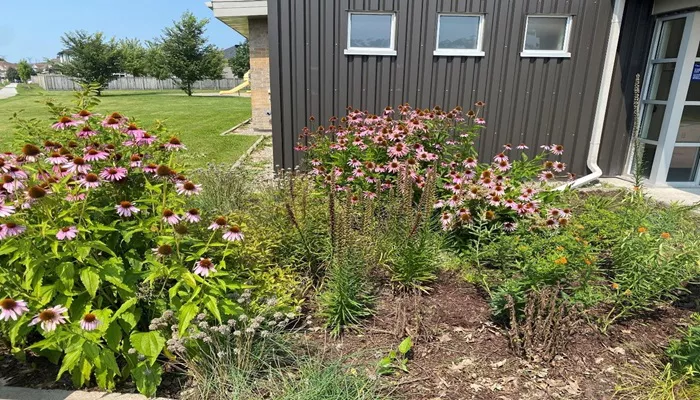Grasshoppers are notorious for their voracious appetites and the destruction they can inflict on gardens and crops. Their feeding habits can turn a lush green space into a barren wasteland in no time. Understanding what plants grasshoppers avoid can be a game-changer for gardeners and farmers seeking to protect their plants from these pests. In this article, we’ll explore the types of plants that grasshoppers tend to dislike and discuss strategies for using these plants to create a more resilient garden.
Understanding Grasshopper Behavior
Grasshoppers are herbivores that feed on a wide variety of plants. They are particularly drawn to plants with tender, juicy leaves. However, they do have preferences and aversions based on the plant’s physical and chemical properties. By understanding these preferences, you can strategically choose plants that deter grasshoppers, thereby reducing the need for chemical pest control methods.
Plants Grasshoppers Dislike
1. Herbs with Strong Scents
Herbs with strong scents are known to repel many types of pests, including grasshoppers. Their intense aromas can be overwhelming to these insects and often mask the scents of more palatable plants. Some effective herbs include:
Mint: Its strong menthol aroma is a well-known deterrent for many pests.
Thyme: This herb’s potent fragrance can help keep grasshoppers at bay.
Rosemary: Its woody scent is another effective natural repellent.
These herbs can be planted around the perimeter of your garden or interspersed among other plants to create a barrier that grasshoppers are less likely to cross.
2. Plants with Tough, Woody Leaves
Grasshoppers prefer plants with tender, juicy leaves. Plants with tougher, more fibrous foliage are less appealing to them. Consider these options:
Lavender: The leathery leaves and strong fragrance of lavender make it an unattractive choice for grasshoppers.
Sage: This herb has a rough texture and a strong scent that deters grasshoppers.
Oregano: With its dense and robust foliage, oregano can help protect other plants.
These plants not only serve as deterrents but also add beauty and variety to your garden.
3. Plants with Bitter Tastes
Grasshoppers are less likely to feed on plants with bitter or unpleasant flavors. These tastes can signal to them that the plant is not a good food source. Some plants with bitter qualities include:
Brassicas: Plants like kale, cabbage, and Brussels sprouts have a bitter taste that grasshoppers tend to avoid.
Artichokes: The leaves of artichokes contain compounds that are unappealing to grasshoppers.
Incorporating these plants into your garden can help reduce the attractiveness of your garden to grasshoppers.
4. Plants with Sharp Edges or Spines
Grasshoppers generally prefer soft, tender leaves and will avoid plants with sharp edges or spines that can cause them discomfort. Consider planting:
Thistles: Though often considered a weed, thistles have spiky leaves that deter many pests.
Yucca: The stiff, sharp leaves of yucca plants are another effective deterrent.
These plants can create physical barriers that make it more difficult for grasshoppers to access more desirable plants.
Creating a Grasshopper-Resistant Garden
1. Companion Planting
Using companion planting is a strategic way to protect your garden from grasshoppers. By planting grasshopper-repelling plants next to more vulnerable ones, you can create a natural defense system. For example, planting mint or lavender near lettuce or beans can help keep grasshoppers away from your more delicate crops.
2. Strategic Placement
Place plants that grasshoppers dislike around the edges of your garden or in areas where they are most likely to enter. This can create a deterrent barrier and help protect the more susceptible plants inside.
3. Diverse Plant Selection
Diversifying your garden with a variety of plants can confuse and deter grasshoppers. A mixed garden with different textures, scents, and flavors is less likely to attract large numbers of grasshoppers compared to a uniform garden of a single plant type.
4. Regular Maintenance
Regularly check your garden for grasshopper activity and maintain the health of your deterrent plants. Healthy, well-maintained plants are more effective at repelling pests.
see also: How Plants Get Spider Mites?
Summary
Grasshoppers can be a significant challenge for gardeners, but understanding their preferences can help in developing effective strategies to keep them at bay. By incorporating plants with strong scents, tough or bitter leaves, and sharp edges, you can create a garden environment that grasshoppers are less likely to invade. Companion planting, strategic placement, and garden diversification further enhance your garden’s resilience against these pests.
By integrating these plants into your garden, you not only reduce the likelihood of grasshopper damage but also enhance the overall health and aesthetic appeal of your garden. With these strategies, you can create a thriving garden that resists the challenges posed by grasshoppers and other pests.


